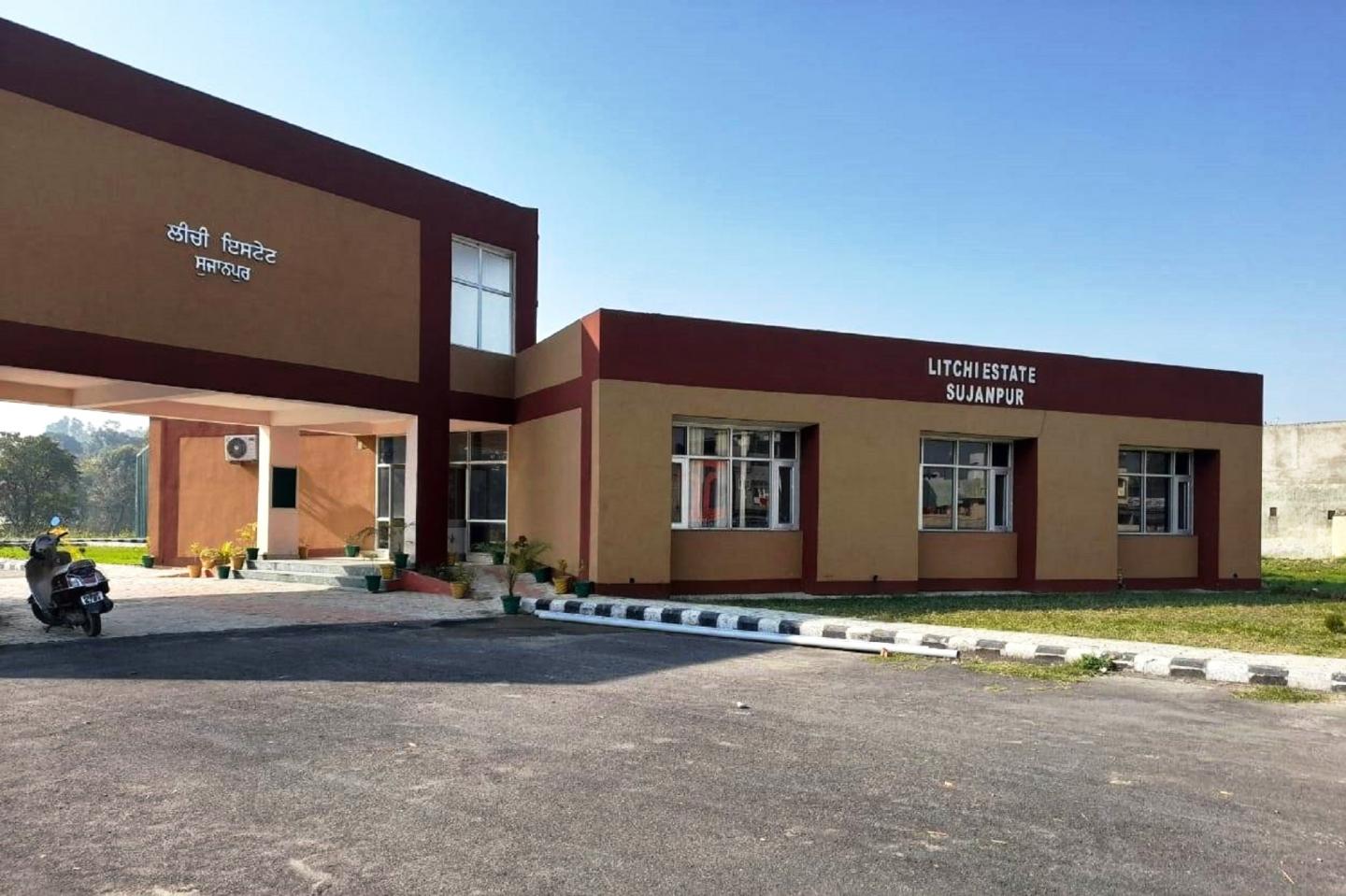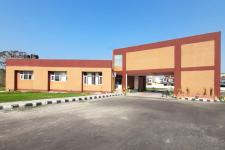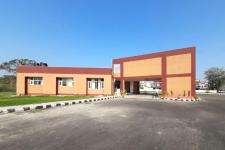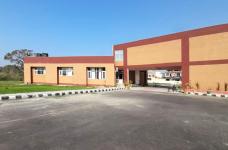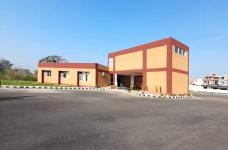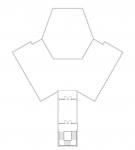Punjab has emerged as one of the top litchi-producing states of India. The district of Pathankot in Punjab has the highest yield of litchi due to its sub-mountainous terrain, high humidity, and favourable soil conditions. With a view to promote further the cultivation of litchi and improve its post-harvest handling, the government has decided to set-up a Litchi Estate on its existing farm at Sujanpur near Pathankot. The main objective of this estate is to motivate and train the farmers for adoption of litchi cultivation besides imparting the technical knowhow for post-harvest handling of the crop.
Physical infrastructure of the estate includes an administrative block and a grading/packing unit. The administrative block houses workplace for officers, experts and staff besides a training/conference hall for farmers, and an exhibition hall.
The building is designed on the principle of strict geometry and symmetry. Entry to the building is through a porch which has been created by chopping off a portion of the double-storied cubical block with seamless surfaces in a minimalist manner. The upper portion of this block accommodates an exhibition hall which has independent access through a staircase provided at the outer side. The main entrance to the building leads to a funnel-shaped foyer. This foyer accommodates administrative offices and other utility areas on both sides, and a training/conference hall for farmers at the rear. Placed along the central axis, this 128-seat hall has an inviting and conspicuous entry. The building though is small in size but has all the ingredients of a visually-appealing piece of modern architecture vis-à-vis play of volumes, light and shade, solids and voids, seamless unadorned surfaces, and minimal elements.
2016
2018
The building is designed on the principle of strict geometry and symmetry. Entry to the building is through a porch which has been created by chopping off a portion of the double-storied cubical block with seamless surfaces in a minimalist manner. The upper portion of this block accommodates an exhibition hall which has independent access through a staircase provided at the outer side. The main entrance to the building leads to a funnel-shaped foyer. This foyer accommodates administrative offices and other utility areas on both sides, and a training/conference hall for farmers at the rear. Placed along the central axis, this 128-seat hall has an inviting and conspicuous entry. The building though is small in size but has all the ingredients of a visually-appealing piece of modern architecture vis-à-vis play of volumes, light and shade, solids and voids, seamless unadorned surfaces, and minimal elements.
Architect: Sarbjit Bahga
